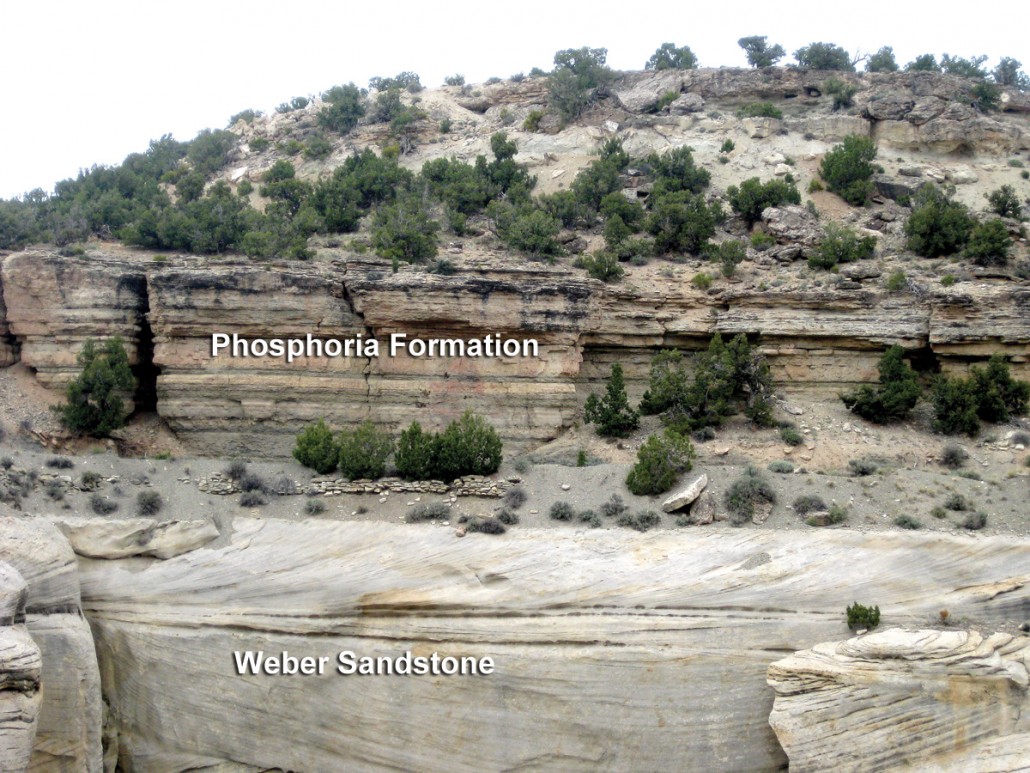 A Phosphorus Fertilizer Primer - February 12, 2020 Jeff Schalau, Agent, Agriculture & Natural Resources University of Arizona Cooperative Extension, Yavapai County Phosphorus is an essential nutrient for all living organisms including the food crops we grow. It’s part of DNA, used in energy transfer in living cells, and contributes to the structure of cell membranes. Moreover, phosphorus fertilizers have been instrumental in boosting crop yields to feed the Earth’s ever increasing population. Backyard gardeners may think of phosphorus as the middle number on the fertilizer package or as the bone meal they use to amend planting holes. Understanding a little more about global phosphorus supplies, fertilizer manufacturing, and phosphorus availability in our soils should help backyard gardeners make informed decisions related to its use. Phosphorus exists primarily in sediments and rock. When marine organisms die or are eaten and excreted by other animals, some of the phosphorus in their bodies sinks to the ocean floor and gets buried in sediment, eventually becoming rock. Over millions of years, that rock shifts and lifts back up to Earth’s surface. The rocks weather and break down, forming new soil containing phosphorus that can nourish plant growth. Phosphorus from dead plants and the carcasses or excrement of animals is also released to the environment where it can be taken up by plants. Otherwise, it too eventually makes its way to the earth’s oceans. Phosphate rock is the main source of phosphorus for fertilizers. The earth holds a limited amount of easily accessible, high quality phosphate rock. The United States (Florida, North Carolina, Utah, and Idaho) produced 10% of the world’s phosphorus in 2018. China is the largest producer at 52% with Morocco, Russia, and Jordan producing 12%, 5%, and 3% respectively (from USGS Reference included with the web version of this column). As high-quality deposits become depleted, remaining untapped reserves generally contain less phosphorus. Some researchers predict that the annual amount of phosphorus retrieved from mined phosphate rock could peak sometime this century. As you might expect, this has sparked conversations about food security. The plant available phosphorus in rock phosphate is very low. This combined with high transportation costs has resulted in the industrial manufacture of phosphorus fertilizers. Briefly, rock phosphate is treated with acid to produce orthophosphoric acid—the phosphate form that is taken up by plants. One phosphorus fertilizer, triple super phosphate, contains 45% by weight plant available phosphate (0-45-0). Certified organic producers are not allowed to use these fertilizers and must rely on rock phosphate, manure, animal byproducts, or compost to supply phosphorus. These materials have lower amounts of plant available phosphorus than inorganic fertilizers (60-80%) and generally have much higher costs to achieve similar results. To further complicate our gardening efforts, maximum phosphorus availability occurs between soil pH 6.0 to 7.0. In Yavapai County our soils tend to be alkaline and have a pH of 7.0 to 7.8 and greater. Soils with a pH of 7.5 and higher typically have a high calcium concentration that binds phosphorus as calcium-phosphate creating an insoluble compound that is not available to plants (this process is called P fixation). Vegetable and annual flower gardeners can amend soils with soil sulfur and organic matter to temporarily decrease the soil pH. Where soil pH is 8 or higher, add elemental sulfur annually at a rate of 6 to 10 pounds per 1,000 square feet of area. Elemental sulfur slowly oxidizes in soil to form sulfuric acid. Test the soil occasionally and stop adding sulfur when pH has reached desirable levels. All vegetable and flower gardeners should amend soils with composted organic matter prior to planting. After following the above recommendations, phosphorus fertilizers can be placed 6-8” deep (called banding) where roots will grow into the fertilized soil. Native plants have adaptations (primarily mycorrhizal fungi infected roots) that allow them to acquire needed phosphorus without using fertilizers. These plants should not be fertilized with anything as this could compromise these desirable mycorrhizal associations. For fruit trees, lawns, roses and other permanent plantings requiring additional fertilizers, apply nitrogen containing fertilizers as recommended. Phosphorus fertilizers should not be applied to the soil surface because phosphorus would be fixed at the soil surface and made unavailable. We should strive to keep the value and importance of phosphorus in mind as we make gardening and consumer choices. I recently visited with a friend living in Amsterdam. He described a project there that harvests human urine for nutrients including phosphorus. Check out the resources included with the on-line version of this column (see URL below). You can follow the Backyard Gardener on Twitter – use the link on the BYG website. If you have other gardening questions, call or email the Master Gardener help line in the Prescott (928-445-6590/prescottmg@gmail.com) or Camp Verde (928-554-8992/verdevalleymg@gmail.com) and be sure to include your name, address and phone number. Find past Backyard Gardener columns or provide feedback at the Backyard Gardener web site: http://cals.arizona.edu/yavapai/anr/hort/byg/.  Phosphate containing rock formation in Utah (Phosphoria Formation, Photo by Utah Geological Survey, from: https://geology.utah.gov/map-pub/survey-notes/todays-and-tomorrows-phosphate/).
Phosphate containing rock formation in Utah (Phosphoria Formation, Photo by Utah Geological Survey, from: https://geology.utah.gov/map-pub/survey-notes/todays-and-tomorrows-phosphate/).Additional Resources Phosphate Rock, 2019 US Geological Survey prd-wret.s3-us-west-2.amazonaws.com/assets/palladium/production/atoms/files/mcs-2019-phosp.pdf Understanding Phosphorus Fertilizers, University of Minnesota Extension extension.umn.edu/phosphorus-and-potassium/understanding-phosphorus-fertilizers Phosphorus Fertilizers for Organic Farming Systems, Colorado State University Extension extension.colostate.edu/topic-areas/agriculture/phosphorus-fertilizers-for-organic-farming-systems-0-569/ Managing Soil pH in Utah, Utah State University Extension digitalcommons.usu.edu/cgi/viewcontent.cgi?referer=&httpsredir=1&article=1922&context=extension_curall Reduce, Reuse, Recycle: The Future of Phosphorus, Science Daily www.sciencedaily.com/releases/2019/09/190916081432.htm Public Urinals Help Amsterdam Harvest Pee as Fertilizer for Green Roofs , Inhabitat inhabitat.com/public-urinals-help-amsterdam-harvest-pee-as-fertilizer-for-green-roofs/ |